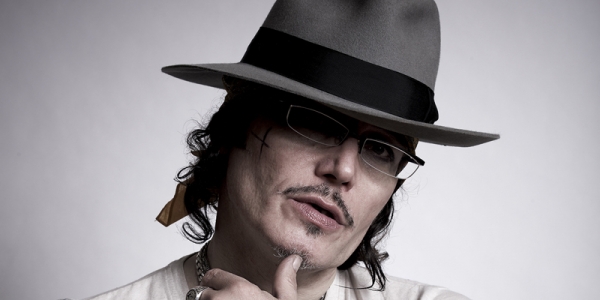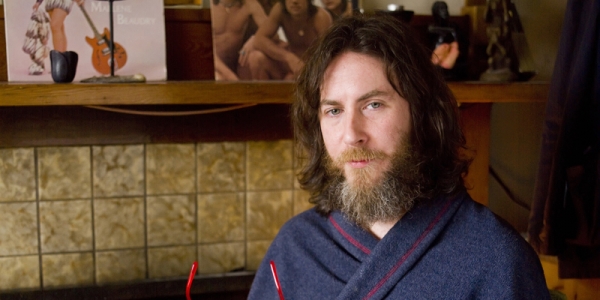In the early ‘70s Ant visited Long Live Rock, the fashion shop owned by young designer Vivienne Westwood and her flamboyant partner, Malcolm McLaren. Later on, when Westwood and McLaren moved to London to open Sex, Ant joined the crowd of impressionable youths – including the so-called ‘Bromley Contingent’ that featured Siouxsie Sioux, Billy Idol and Ant’s one-time manager Jordan – hanging out in the shop. “I first went to Sex in about ’73 or ’74,” Ant says. “It was a very cool shop, but dangerous.”
Later on, when Ant had adopted the Adam Ant persona and formed his own band, Adam And The Ants, McLaren would assume the role of Ant’s manager for a short period. Despite McLaren subsequently poaching Ant’s backing band to form another of McLaren’s contrived pop outfits, Bow Wow Wow, Ant pays tribute to McLaren’s creative nous and intellect. “Malcolm was a really creative force,” Ant says. “I only worked directly with him for about a month, but I listened a lot to him – he was very informed. He knew a lot about rock’n’roll, really obscure bands. He was a very intelligent guy, and I don’t really think that comes across in the work he did with the Sex Pistols,” Ant says.
While many of Ant’s contemporaries in the punk scene pursued a more confrontational and occasionally overtly political line, Ant was content to adopt a more theatrical style. While the notion of a pop singer was anathema to many in the punk scene, for Ant it wasn’t an issue. “I always wanted to sell records,” Ant says. The idea of being a pop singer didn’t worry me. To me, Marc Bolan was a pop singer, and he had great songs,” Ant says.
The success of Antmusic, the lead track from the second Adam And The Ants album, Kings Of The Wild Frontier, catapulted Ant into pop stardom. It was around this time that Ant’s dedication to his musical career began to take its toll on his psychological wellbeing. “I was not good at saying no to anything,” Ant says. “I was working like an absolute maniac, and I was exhausted.” Ant’s third record, Prince Charming, featured the hit singles Stand And Deliver and the title track. Ant subsequently disbanded his backing band, and embarked on a solo career, releasing another hit single, Goody Two Shoes.
By 1985 Ant was ready for a change, and traded in his musical career for acting (Ant had first appeared on screen in Derek Jarman’s 1977 punk film, Jubilee). A few years later Ant headed across the Atlantic to California, where he appeared in a series of plays and films over the next ten years. “It was a completely different world,” Ant says of his time in California. “Just because you’re qualified in the music world doesn’t mean you’re qualified to be in films.”
By the mid ‘90s Ant had returned to music; his career, however, didn’t return to the heady heights of the early ’80s. “It’s just a logical thing,” Ant says of the decline in his popularity in the pop music world. “You’re in a weekly, daily chart race. By 1985 I’d had enough of it, and that’s why I got into films. It was a good break to make – it had all got a bit crazy.”
Ant eventually moved back to England, and rekindled his musical career. “Music is a passion for me,” Ant says. “Having spent time away from it, by the time I got back into it, things had changed a lot. I had a daughter so my situation was a lot different. And I was able to go back into the music industry on my own terms, on my own label,” Ant says. The after effects of Ant’s hectic pop lifestyle bubbled to the surface in 2002 when Ant was confined to a psychiatric hospital after a series of incidents culminated with him being diagnosed with bipolar disorder. “My mental illness is really because of working like a maniac for so many years and basically being exhausted,” Ant says. “Mental illness is something that’s very difficult for people to understand, but the response I’ve got from people has been really positive.”
Thirty years after topping the charts, and Ant is back on stage, and on the eve of an Australian tour. With a fan base eager to hear his hit singles, as well as a rich catalogue of more recent material, Ant walks the line between the old and new. “I’ve got ten albums of material, so I have to look at it in terms of my own favourites, and also what the fans want to hear,” Ant says. “I like to think I do a show like if I was going to see Roxy Music. It’s a retrospective of my catalogue, with some new tracks thrown in as well.”
BY PATRICK EMERY







